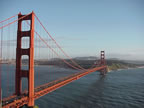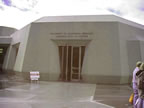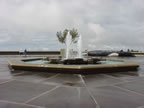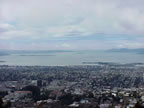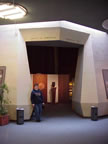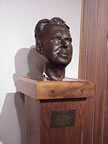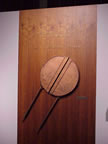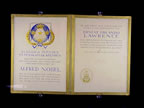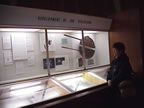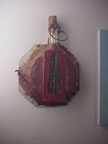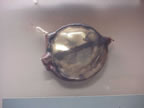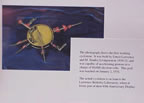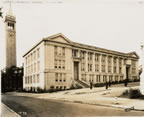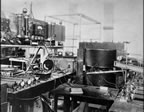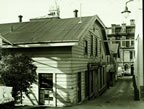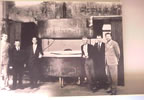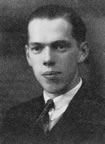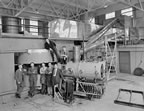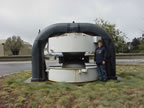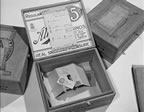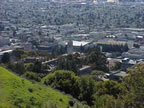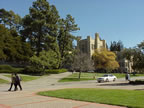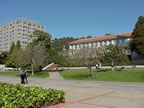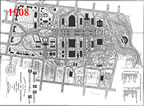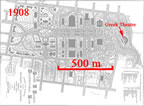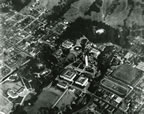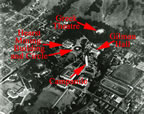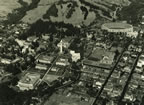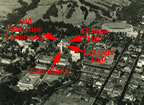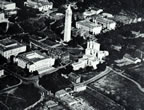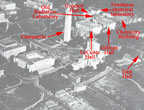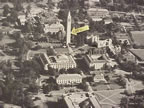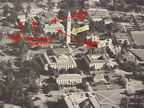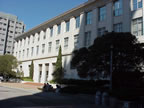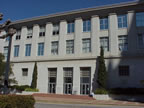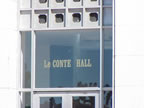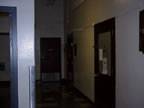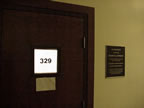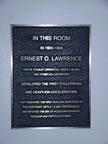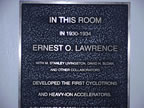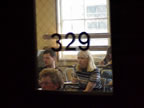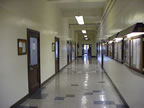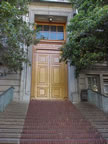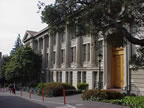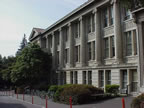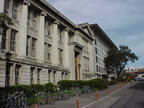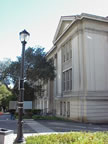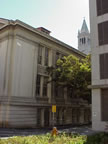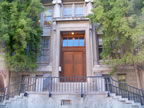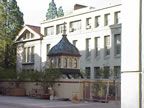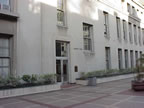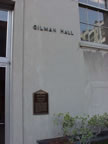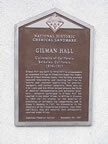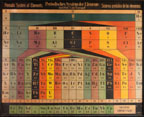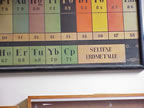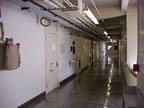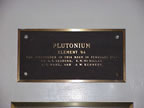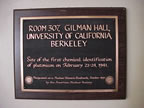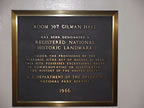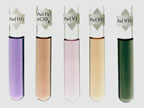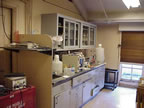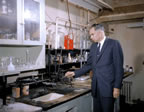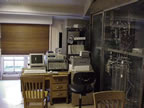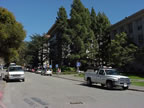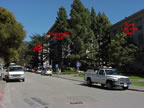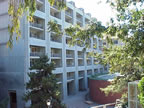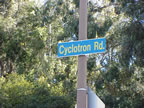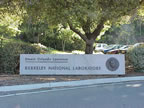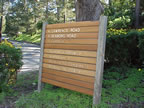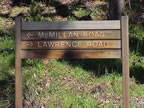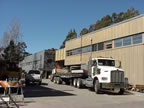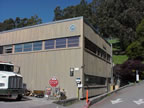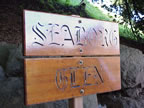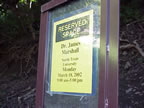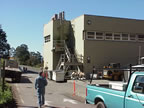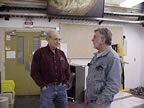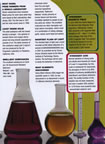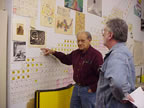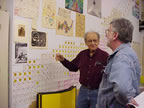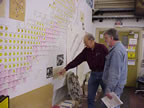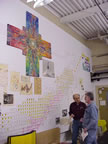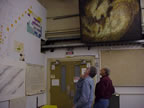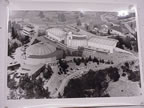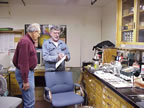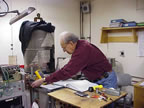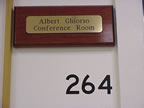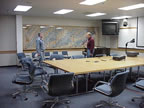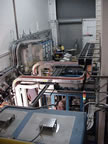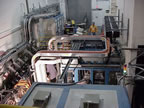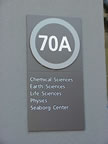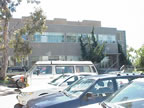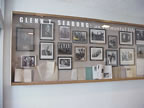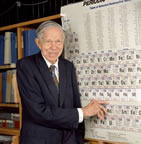Berkeley, California |
Click on individual icons to see larger pictures and text.
Link to Maps Within The United States
Place: Berkeley, California
Element: Technetium, Astatine (also, neptunium, plutonium, and other transuranium
elements)
Scientist: Corson, Segrè, McMillan, Abelson
|
The Golden Gate Bridge |
The Lawrence Hall of Science |
terrace in front |
view of the San Francisco Bay |
entrance to the museum |
|
bust of E. O. Lawrence |
an early cyclotron |
The Nobel Prize |
development of cyclotrons |
first proto-cyclotron |
|
second proto-cyclotron |
first operational cyclotron |
LeConte Hall |
11-inch cyclotron |
Old Radiation Laboratory |
|
Crocker Hall |
cyclotron required this 225-ton magnet |
Edwin Macmillan |
Portrait of Abelson |
the 60-inch cyclotron |
|
Glenn Seaborg and Albert Ghiorso |
the 37-inch magnet |
first sample of plutonium-239 |
down the slopes of the Berkeley Hills |
Sather Tower |
|
base of the Campanile |
streets have been relocated |
map of the Berkeley campus |
only recognizable feature ... |
1919 aerial view |
|
Gilman Hall |
1931 aerial photo |
1931 LeConte Hall |
1942 map with Crocker Hall |
Crocker Hall was built in 1937 |
|
aerial view of the campus in 1940 |
The Chemistry buildings |
photo dated early 1940s |
Freshman chemistry laboratory, etc. |
aerial view during the 1940s |
|
photo is displayed |
Berkeley campus in 1963 |
The entrance to the new site |
Berkeley campus in 1971 |
Crocker Hall is now gone |
|
Berkeley campus in 1996 |
184-inch cyclotron site |
One minute's walk north |
"Old LeConte Hall" remodeled |
the main entrance |
|
the third floor in Old LeConte Hall |
first operational cyclotrons |
From these beginnings... |
initial development |
classroom for beginning physics classes |
|
the view looking southward |
Exiting from Old LeConte |
east side of Old LeConte |
slightly different vantage point |
from the south end. |
|
Walking northward |
Rotating to the right |
Gilman Hall |
The actual exterior plaque |
Closer view of the door |
|
Closeup of the entrance |
National Historic Chemical Landmark |
Antropoff Periodic Table inside Gilman Hall |
Closeup of Antropoff Periodic Table |
On the third floor |
|
Plutonium was discovered |
This laboratory is important |
Seaborg's discovery of plutonium |
The isolation and purification of plutonium |
an important laboratory |
|
Seaborg visiting 307 Gilman |
right side of the laboratory |
north of New LeConte Hall |
New LeConte Hall |
Latimer Hall |
|
north of University Drive |
Lawrence Berkeley [Radiation] National Laboratory |
From Cyclotron Road |
turn on McMillan Road |
Our goal is Building 71A |
|
a shaded corner |
Our reserved parking place |
an honor to be accommodated |
Walking from Seaborg's Glen |
Al Ghiorso (left) with the author |
|
2003 Guinness World Records |
Ghiorso should also be credited with element 110 |
Al Ghiorso tells an engrossing story |
The HILAC was used to synthesize 102 |
Actually, 99 (einsteium) and 100 (fermium) |
|
For elements beyond 100 |
A hypothesis of the nuclear physicist |
A special dream of Ghiorso |
Fermium (atomic number 100) |
Ghiorso was still engaged in research |
|
room is named after Ghiorso |
Albert Ghiorso Conference Room |
the HILAC which synthesized elements beyond 100 |
Closeup of the HILAC |
where Seaborg's office was located |
|
Building 70A, on Seaborg Road. |
Inside Building 70A |
Seaborg in front of the Periodic Table in 1995 |
Copyright ©2018, Dr. James L. Marshall and Virginia R. Marshall
All Rights Reserved.
